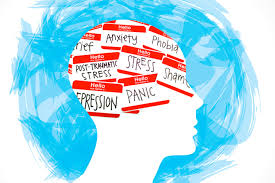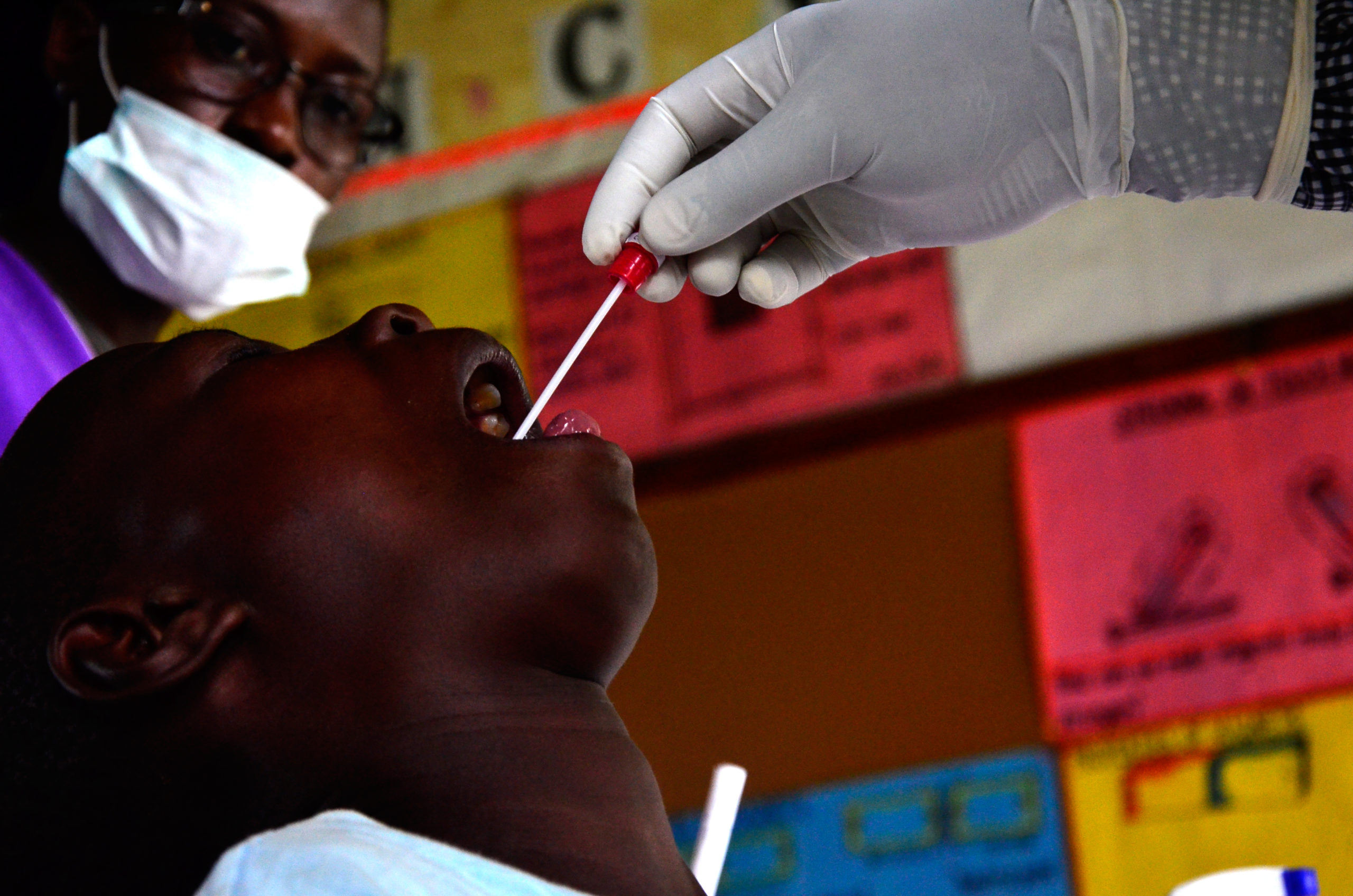By: Begumya Rushongoza
We have a pandemic on our hands. Since late 2019, and peaking in 2020, the COVID-19 pandemic has ravaged the world, and completely changed public and private life as we knew it. Companies and enterprises have closed shop or gone insolvent, employees have been laid off, new technologies have emerged to offer alternative ways of doing things, counter measures to curb the spread of COVID-19 have been imposed by most governments around the world or near identical terms; lockdowns, restrictions on public gatherings, closing borders and airports or tightly controlling admission and exit from countries, social distancing rules and so on.
And yet, in the middle of a pandemic that has claimed the lives of just shy of a million people worldwide and 201 people (as of November 30, 2020) in Uganda, I am writing this article to argue that while we are trying to navigate this devastating pandemic, another one is coming.
A Mental Health Pandemic On the Way?
Research on the prevalence of mental health conditions in Uganda has consistently shown a steady increase of mental health cases in the country. Orley and Wing, conducting a study in Kabarole in 1979 found that 9.3% of the respondents had depression, 8.5% had anxiety, 4.9% were bipolar and 1.5% had Schizophrenia. Another study by Abbo et al in 2009 reported that the prevalence of mental health conditions varied from 10% to nearly 50% of all primary health care attendees. They also found that 60.2% of their 387 respondents had at least one current diagnosed mental health disorder. A 2017 World Health Organisation (WHO) report stated that 1.7 million Ugandans suffered from depressive disorders and 1.07 million suffered from anxiety disorders. The report placed Uganda in the top six countries most affected out of the 50 countries considered. The report also estimated that depression would be the leading cause of disability and the largest contributor to disease burden globally by 2030. The Observer reported in 2017 that 3 in 10 people in Northern Uganda suffer from depression and depression was the second leading cause of death among people aged 15 to 24. A 2019 study by Rukundo et al noted that at least 35% of Ugandans suffer from some form of mental health issue. A 2020 research on depression among urban refugees and displaced youth found that 73.9% of young women and 49.1% of young men had symptoms of depression.
By all indicators, mental health problems, the most prevalent of which appears to be depression and anxiety, are on the rise.
Mental Health Illnesses: What are they?
Broadly, mental health illness is a term of wide import, referring and relating to all mental conditions or impairments that cause significant distress to personal functioning. They can be broken down into seven broad categories, these are; mood disorders such as depression and bipolar disorder, anxiety disorders such as panic disorder and Obssessive Compulsive Disorder (OCD), eating disorders such as anorexia, psychotic disorders such as Schizophrenia, personality disorders such as Schizoid, Schizotypal, Anti-social disorders and post-traumatic stress disorder (PTSD). Some publications add organic mental illnesses as another category.
Mental Health conditions are many and complex, and accordingly, the assumption that Mental Health refers exclusively to depression or anxiety is wrong.
Poetry and Mental Health
On 21st August 1995, my father passed away with his mother, my grandmother, by his side. In the same hospital my mother was looking after a one-day old baby who had been born premature: me. My grandmother, devastated by the loss of her eldest son, and later her husband in the same year, would herself pass on in 1996. In January 2002, aged 7 years old, I was pulled out of a maths exam to attend the burial of my mother. That is the first time I had truly considered killing myself. My aunt reportedly assigned a cousin of mine to have an eye on me at all times because I had been heard saying, after I saw my mother’s body, that I wanted to drown myself in our well. It appears that the family made a decision to not inform me of, let alone bring me to any funerals that did not involve the death of the most immediate of my family. Later the same year, my aunt, who I was closer to than my mom on account of my mom’s own absences in hospitals, succumbed to cancer. I did not know until about three or four months after the fact. I lost my grandfather, my mother’s father, and a couple of close relatives between 2002 and 2011, and my family always told me after the fact. After my mother’s death, the decision was made to move me to my uncle’s home, my father’s half-brother. It was okay at first. Save for the fact that I felt a little bit lonely in boarding school, I fitted in just fine. As I grew older, I became more perceptive of my uncle’s turbulent relationship with alcohol and his own violence. I felt isolated, scared and vulnerable. During this period, I remained close to only one person on my mother’s side of the family; my grandmother, my mother’s mother.
It was a very strong relationship, helped in part by the fact that she reminded me a lot of my mother, who I dearly missed, and I reminded her a lot of my mother, her last born, who she dearly missed. My grandmother became the epicenter of my life, she was the fountain of hope on which I braved the violence and loneliness. In 2011, she passed on. My life totally changed. On one hand, I had to contend with the violence of my uncle, and on the other, the trauma from the loss of so many people I cared about. I must put a disclaimer here; I am not going to say that my uncle was sheer evil. He was not a bad man. He was a violent one. Violent but providing for me, but violent nonetheless.
Between 2011 and 2015, a mental health problem was forming, and I did not realise it. The nightmares of what had ended at the start of secondary school returned. Hallucinations too. I started to see my father, mother, grandmother and aunt. They would appear, usually standing in corners of rooms and doing absolutely nothing. I didn’t say a word.
In 2015, I began to feel hopelessly sad for long periods of time, and began getting suicide thoughts. I started having trouble sleeping, and was anxious that I would lose my life in my sleep. I attempted suicide thrice. Again, I gave away very little. Only those who were particularly close to me got to know.
I began writing poems about my experiences as part of an introspection therapy I saw online. Later, in 2016, I started to write poems to my younger self. My close friends who read the drafts asked me to perform them at poetry events in Kampala. I declined, but one of them convinced me to share them on a blog I had opened. I hesitantly agreed. The result of that journey is my new poetry collection, LIGHT, that came out in September 2020.
The Role of Poetry
Oral traditions historically played a crucial role in African society. Orature was used as first, a memory bank of the collective memory of the society. Songs and poems were used to record and transmit to future generations and pass key lessons and social rules. Other societies employed this too. For instance, two of the most important holy books; The Bible and Quran are written in poetry.
Further, African traditions employed orature as a therapy, recounting traumatic experiences and passing on advice on how to avoid or recover from them using poems or songs. Again, societies around the world historically employed orature, and specifically poetry as a curative resource. In the medieval times, poetry was sold in apothecaries and some physicians were poets, a notable example being John Keats. In Greek mythology, Apollo was the Greek god of medicine, poetry and music. Poetry has a strong relationship with medicine and therapy. Poetry is medicine.
Societies all around the world still use poetry as a curative resource. Jensen and Bonde’s 2018 paper show that the use of arts interventions for mental health in health settings in Nordic countries was associated with very positive outcomes in the mental health of participants.
This is because poetry, and broadly art, is a viable tool for introspection, allowing a mental health patient identify the symptoms and triggers of their condition and how to manage it. The joy of creating poetry translates into better mental health as does the feeling of community brought about by interaction with various creatives and audiences. More importantly, poetry starts a conversation, raising awareness of mental health conditions and provoking a conversation on how to craft interventions.
Lastly, use of poetry, and broadly art, to treat mental health conditions is a viable alternative to the clinical model. According to Molodysnki et al’s 2017 research, Uganda spends only 1% of GDP on mental health care and there is little or no community mental health care. Although mental health care is part of primary health care, health care centers are poorly equipped or not equipped at all to handle mental health care needs of the public and about 90% of people with mental health conditions receive no treatment. Further, the clinical model suffers a nasty reputation of abuse and stigma. MDAC’s 2014 report highlighted the gross mistreatment in clinical mental health care centers including seclusion rooms, improper admission processes that didn’t distinguish between voluntary and involuntary admission, the lack of psychological interventions and heavy reliance on pharmacological treatment, often with severe side-effects.
Mental Health is the next COVID-19, but it will do something that COVID-19 has not done. It will claim more lives, and damage more families, communities and economies. We aren’t focusing on the looming threat it is and creating an infrastructure to counter it. Like most policy interventions in Uganda, it appears that government will take a reactionary rather than preventive approach. The solution, at least in part, can be found in poems.
Sources
Orley, J., & Wing, J. K. (1979). Psychiatric disorders in two African villages. Archives of General Psychiatry, 36(5), 513–520. https://doi.org/10.1001/archpsyc.1979.01780050023001
Abbo C, Ekblad S, Waako P, Okello E, Musisi S. The prevalence and severity of mental illnesses handled by traditional healers in two districts in Uganda. Afr Health Sci. 2009 Aug 1;9 Suppl 1(Suppl 1):S16-22. PMID: 20589155; PMCID: PMC2890991. https://www.ncbi.nlm.nih.gov/pmc/articles/PMC2890991/
Depression and Other Common Mental Disorders: Global Health Estimates. Geneva: World Health Organization; 2017. Licence: CC BY-NC-SA 3.0 IGO. https://apps.who.int/iris/bitstream/handle/10665/254610/WHO-MSD-MER-2017.2-eng.pdf
Abubaker Mayemba, “Northern Uganda leads in depression prevalence.” The Observer. April 12th 2017. Accessible at https://observer.ug/news/headlines/52269-northern-uganda-leads-in-depression-prevalence
Rukundo GZ, Byakwaga H, Kinengyere A, et al Prevalence and factors associated with suicide among medical professionals in low/middle-income countries: a systematic review protocol BMJ Open 2019;9:e028884. doi: 10.1136/bmjopen-2018-028884 https://bmjopen.bmj.com/content/9/8/e028884.info
Carmen H. Logie, Moses Okumu, Simon Mwima, Robert Hakiza, Doreen Chemutai & Peter Kyambadde Conflict and Health volume 14, Article number: 45 (2020) https://conflictandhealth.biomedcentral.com/articles/10.1186/s13031-020-00289-7
Molodynski, Andrew & Cusack, Christina & Nixon, Jurua. (2017). Mental healthcare in Uganda: desperate challenges but real opportunities. BJPsych International. 14. 98-100. 10.1192/S2056474000002129. https://www.ncbi.nlm.nih.gov/pmc/articles/PMC5663025/
MDAC and MHU, Psychiatric hospitals in Uganda: A human rights investigation (Budapest: 2014). http://www.mdac.org/sites/mdac.info/files/psyciatric_hospitals_in_uganda_human_rights_investigation.pdf

Begumya Rushongoza is a poet and lawyer.









